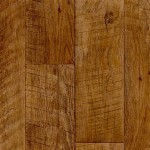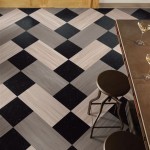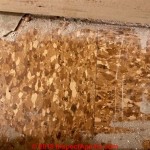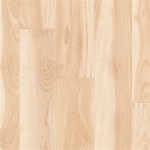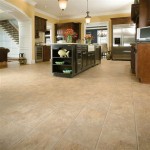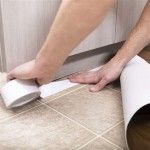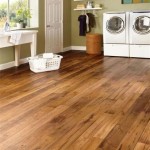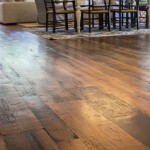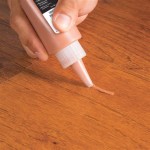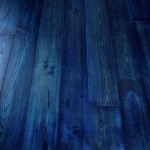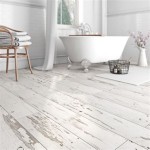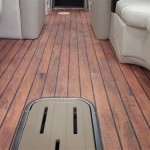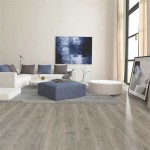What Is The Best Waterproof Laminate Flooring?
Waterproof laminate flooring represents a significant advancement in flooring technology, offering the aesthetic appeal of traditional laminate with enhanced resistance to moisture. Selecting the "best" waterproof laminate flooring involves considering several key factors, including the core material, construction, wear layer, style, and intended use. This article explores these critical aspects to provide a comprehensive understanding of what distinguishes high-quality waterproof laminate and helps in making an informed decision.
Understanding Waterproof vs. Water-Resistant
It is essential to first differentiate between waterproof and water-resistant flooring. Water-resistant flooring can withstand moisture for a limited time, often through a surface treatment that repels spills. However, prolonged exposure to water can lead to absorption and damage, such as swelling or warping. Waterproof flooring, on the other hand, is designed to completely prevent water from penetrating its core and causing damage. This is typically achieved through a tightly sealed locking system and a dense, waterproof core material.
The term "waterproof" typically refers to the flooring's ability to withstand standing water for extended periods without water seeping through the surface and damaging the subfloor. While some marketing materials may use the terms interchangeably, it's crucial to understand the true level of protection offered by the specific product. Careful examination of the manufacturer's specifications and warranty details is vital in determining the flooring's actual waterproof capabilities.
Key Factors in Evaluating Waterproof Laminate Flooring
The quality and performance of waterproof laminate flooring hinges on several factors related to its construction and composition.
Core Composition and Density
The core material is arguably the most critical component of waterproof laminate flooring. The core provides structural integrity and is responsible for preventing water absorption. High-density fiberboard (HDF) is a common core material in traditional laminate, but it is susceptible to water damage. In waterproof laminate, alternative core materials are used, such as Wood Plastic Composite (WPC) or Stone Plastic Composite (SPC).
WPC cores are made from a blend of wood flour and plastic polymers. They offer a degree of water resistance and can provide a softer, more comfortable feel underfoot compared to traditional laminate. SPC cores, on the other hand, are composed of limestone powder and plastic stabilizers. They are incredibly dense and rigid, offering superior waterproof performance and resistance to indentation.
The density of the core material is a crucial factor. A denser core will be less porous and therefore less likely to absorb water. When evaluating waterproof laminate, it is advisable to inquire about the core's density and composition. SPC cores generally offer the highest level of waterproof protection due to their inherent density and imperviousness to water.
Wear Layer and Surface Protection
The wear layer is the transparent top layer of the laminate flooring that protects the decorative layer from scratches, stains, and wear. It is typically made of aluminum oxide, a highly durable material. The thickness of the wear layer is measured in mils (thousandths of an inch). A thicker wear layer will provide greater protection against everyday wear and tear, extending the lifespan of the flooring.
For residential applications, a wear layer of 12 mils or greater is generally recommended. For commercial applications, a wear layer of 20 mils or higher is preferable due to the increased foot traffic and potential for abrasion. A durable wear layer not only protects against scratches but also contributes to the overall waterproof performance of the flooring by preventing surface damage that could compromise the integrity of the underlying layers.
The surface texture and finish also play a role in the performance of waterproof laminate. Some manufacturers offer textured surfaces that mimic the look and feel of natural wood. These textured surfaces can also provide enhanced slip resistance. The finish should be durable and resistant to staining to maintain the flooring's appearance over time.
Click-Locking System
The click-locking system is the mechanism that connects the individual planks or tiles of laminate flooring. A secure and tight-fitting locking system is essential for preventing water from seeping between the planks and damaging the subfloor. Waterproof laminate flooring typically features a specially designed locking system that creates a watertight seal.
The precision and quality of the locking system are critical to its effectiveness. A poorly designed or manufactured locking system may not create a tight enough seal, allowing water to penetrate the seams. It is advisable to choose waterproof laminate flooring with a reputable locking system that is known for its reliability and watertight performance. Look for reviews and testimonials that attest to the locking system's effectiveness in preventing water damage.
Proper installation is also crucial for ensuring the watertight integrity of the locking system. Following the manufacturer's instructions carefully is essential. Using the correct tools and techniques will help ensure that the planks are properly aligned and securely locked together. A professional installation can minimize the risk of water damage due to improper installation techniques.
Style and Aesthetics
While waterproof performance is paramount, the aesthetic appeal of the laminate flooring is also an important consideration. Waterproof laminate is available in a wide range of styles, colors, and textures to suit various design preferences. Mimicking the look of hardwood, stone, or tile, waterproof laminate offers versatility in design while providing superior water protection.
Wood-Look Laminate
Wood-look laminate is a popular choice for homeowners seeking the warmth and elegance of hardwood without the associated maintenance requirements and susceptibility to water damage. This type of laminate is available in a variety of wood species, colors, and plank sizes. Embossed-in-register (EIR) technology is often used to create a realistic wood texture that aligns with the underlying design, enhancing the authenticity of the wood-look.
The choice of wood-look laminate can significantly impact the overall aesthetic of a room. Lighter wood tones can create a bright and airy feel, while darker tones can add warmth and sophistication. Plank size can also influence the perceived scale of the room. Wider planks can make a room feel more spacious.
Stone and Tile-Look Laminate
Stone and tile-look laminate offers the visual appeal of natural stone or ceramic tile with the added benefit of waterproof performance and easier installation. These laminates are available in various stone and tile designs, including slate, travertine, and ceramic patterns. They can be used in bathrooms, kitchens, and other areas where moisture is a concern.
Stone and tile-look laminate can be a cost-effective alternative to natural stone or tile, offering a similar aesthetic at a lower price point. They are also typically warmer and more comfortable underfoot than natural stone or tile, making them a practical choice for living spaces.
Installation and Maintenance Considerations
Proper installation and regular maintenance are essential for maximizing the lifespan and performance of waterproof laminate flooring. Following the manufacturer's recommendations for installation and care will help ensure that the flooring remains waterproof and maintains its aesthetic appeal over time.
Subfloor Preparation
A level and stable subfloor is crucial for a successful laminate flooring installation. Any imperfections in the subfloor, such as unevenness or cracks, can compromise the integrity of the flooring and affect its long-term performance. Before installing waterproof laminate, it is essential to inspect the subfloor and make any necessary repairs or leveling adjustments.
The subfloor should be clean, dry, and free of debris. Any moisture issues in the subfloor should be addressed before installation to prevent mold or mildew growth. A moisture barrier may be required, depending on the type of subfloor and the manufacturer's recommendations.
Cleaning and Maintenance
Waterproof laminate flooring is relatively easy to clean and maintain. Regular sweeping or vacuuming is recommended to remove dirt and debris. For spills, a damp cloth or mop can be used to wipe up the liquid. Avoid using excessive amounts of water, as this could potentially damage the seams of the flooring, even with a waterproof locking system.
Harsh chemicals or abrasive cleaners should be avoided, as they can damage the wear layer and dull the finish of the flooring. A mild detergent specifically designed for laminate flooring is recommended. Following the manufacturer's cleaning instructions will help maintain the flooring's appearance and protect its waterproof properties.
Warranty and Certification
A comprehensive warranty can provide peace of mind and assurance that the manufacturer stands behind the quality and performance of their product. When selecting waterproof laminate flooring, it is essential to carefully review the warranty terms and conditions. The warranty should cover manufacturing defects, water damage, and wear resistance.
Look for certifications from reputable organizations that verify the flooring's waterproof performance and safety. Certifications such as FloorScore or GREENGUARD indicate that the flooring has been tested for volatile organic compound (VOC) emissions and meets strict indoor air quality standards.
Ultimately, the "best" waterproof laminate flooring is the one that best meets specific needs and priorities. By carefully considering the core composition, wear layer, locking system, style, warranty, and certification, informed decisions can be made to achieve the desired aesthetic appeal, durability, and waterproof performance.

The 6 Best Waterproof Laminate Flooring Brands Of 2024 Floorings

The 6 Best Waterproof Laminate Flooring Brands Of 2024 Floorings

The Best Waterproof Flooring Options Inc

Waterproof Laminate Flooring Review Pros And Cons

Waterproof Laminate Guide

The 6 Best Waterproof Laminate Flooring Brands Of 2024 Floorings

The Best Laminate Flooring Of 2024

The Best Waterproof Flooring Options Inc

Waterproof Laminate For Your Kitchen Bathroom Is It The Best Choice Flooring Direct

The 6 Best Waterproof Laminate Flooring Brands Of 2024 Floorings
Related Posts

